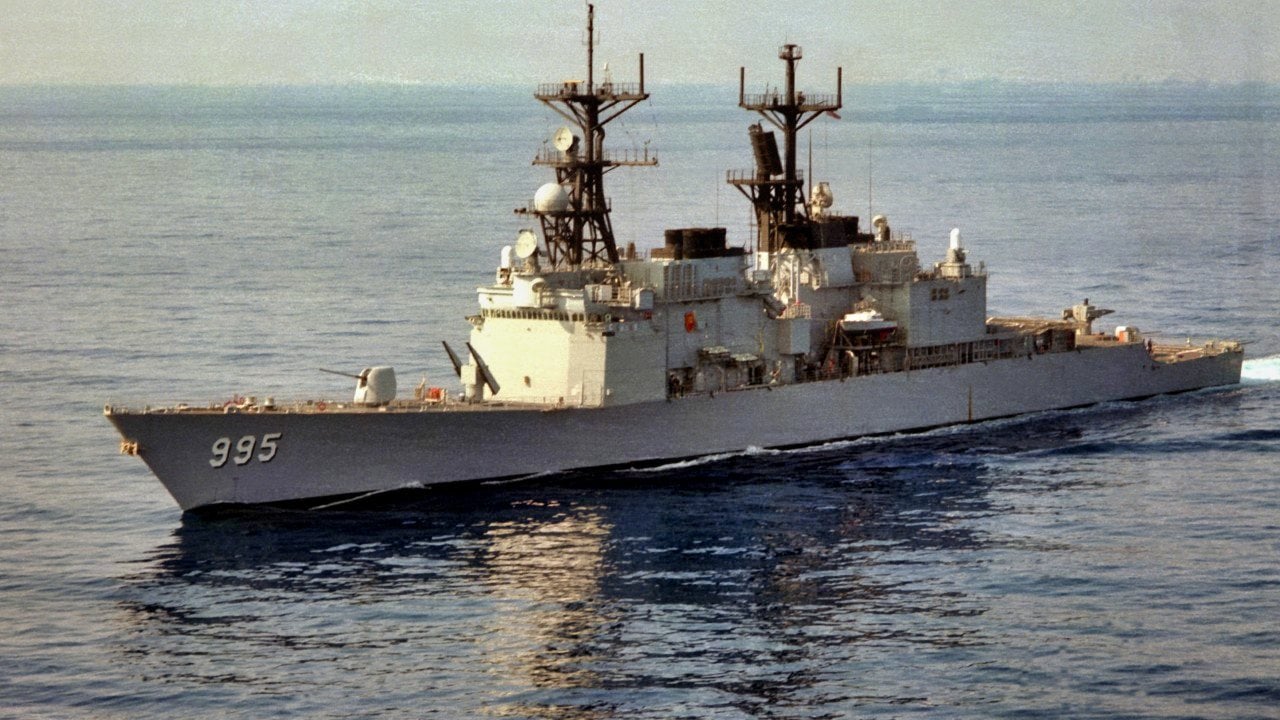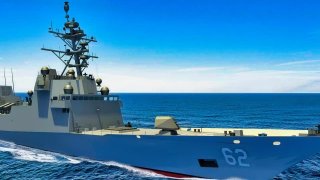The U.S. Navy's Constellation-Class Frigate Program Is In Trouble
The U.S. Navy's Constellation-class guided-missile frigate program is now three years behind schedule, with the U.S. Government Accountability Office (GAO) attributing the delays to "design instability."
Summary: The U.S. Navy's Constellation-class guided-missile frigate program is now three years behind schedule, with the U.S. Government Accountability Office (GAO) attributing the delays to "design instability."

-The Navy's decision to begin construction before finalizing the design has led to increased costs, now exceeding $22 billion.
-The GAO has recommended restructuring the design stability metric, employing more land-based testing, and integrating leading practices in product development to mitigate further delays and cost overruns.
-The Navy has agreed with most of the recommendations, aiming to avoid past mistakes with programs like the Zumwalt-class destroyers and Littoral Combat Ships.
GAO Warns of Three-Year Delay in U.S. Navy's Constellation-Class Frigate Program
A government watchdog warned on Wednesday that the United States Navy's much-needed Constellation- class guided-missile frigate program is now running 36 months (three years) behind schedule. The U.S. Government Accountability Office (GAO) suggested that "design instability" remains a leading issue that will impact the delivery of the planned 20 warships.
"To reduce technical risk, the Navy and its shipbuilder modified an existing design to incorporate Navy specifications and weapon systems. However, the Navy's decision to begin construction before the design was complete is inconsistent with leading ship design practices and jeopardized this approach. Further, design instability has caused weight growth. The figure shows the frigate’s 3D designa component of design stabilityas incomplete over 1 year after construction began," the GAO report noted.
The total cost for the Constellation-class program is now in excess of $22 billion, and delays will only increase the costs, the watchdog further cautioned.
Unfinished Design
U.S. Navy officials have acknowledged that the April 2026 delivery date of the lead vessel of the new class of multirole warships is unachievable. Instead, the future USS Constellation is now on track to arrive at least three years later than initially planned.
The core of the problem is that the design hasn't actually been set – which critics have suggested is like building a model warship without instructions or even all of the parts in the box. The GAO further warned in its report that the U.S. Navy is on track to repeat the same errors if construction begins on the follow-up vessels in the class.
Righting the Course for the Constellation-class
The Constellation-class program is employing multiple mission systems already in use in current U.S. Navy vessels, yet the sea service has failed to demonstrate two primary systems with the new frigates. These include the propulsion and machinery control systems.
"A planned update to the frigate test plancombined with the opportunity afforded by schedule delayscould offer the Navy the chance to conduct land-based testing of these two unproven systems. This testing would reduce the risk of discovering issues after the ship is at sea," the GAO report continued.
Moreover, the Constellation-calls will employ a traditional, linear development approach for both its design and construction. That strategy has resulted in both schedule delays and cost overruns. By incorporating elements of leading practices instead, the U.S. Navy may be better positioned to respond to evolving mission needs and resolve construction delays, the watchdog emphasized.
GAO made five recommendations to the U.S. Navy. These included that the service "restructure its design stability metric to measure progress based more on the quality than quantity of design documents," and that it would utilize these improved metrics to better assess design stability before moving forward with the construction of a second Constellation-class vessel. In addition, the watchdog called for the sea service to employ additional land-based testing into the future warship's current test plan – and to identify any opportunities where it can institute "leading practices for product development into the frigate acquisition strategy."
According to the GAO, the U.S. Navy has agreed with four of its recommendations, and further "partially agreed" when it came to the recommendation related to updating the Constellation-class test plan.
"GAO maintains that all five recommendations should be fully implemented," it said in its report.
It should also be noted that the U.S. Navy needs to get it absolutely right with the new frigates, especially as it has twice in recent history moved forward with vessels not fit for the needs of the 21st century. This included the Zumwalt -class guided missile destroyers, with that expensive program being cut short to just three warships, and the Littoral Combat Ship (LCS) program – where the U.S. Navy has been retiring the oldest vessels even as newer LCS continue to enter service. While not an ideal solution, it was only this year that a minesweeping module was introduced giving the LCS vessels a purpose.

Moreover, as USNI News also reported, the U.S. Navy has an unfortunate "history of decommissioning ships early due to combat system obsolescence issues," including the 1970s-era Kidd-class destroyers and the first five Ticonderoga -class guided-missile cruisers. The U.S. Navy needs to get it right with the Constellation-class before the first vessel hits the water.
Author Experience and Expertise: Peter Suciu
Peter Suciu is a Michigan-based writer. He has contributed to more than four dozen magazines, newspapers, and websites with over 3,200 published pieces over a twenty-year career in journalism. He regularly writes about military hardware, firearms history, cybersecurity, politics, and international affairs. Peter is also a Contributing Writer for Forbes and Clearance Jobs. You can follow him on Twitter: @PeterSuciu. You can email the author: [email protected].
All images are Creative Commons.


